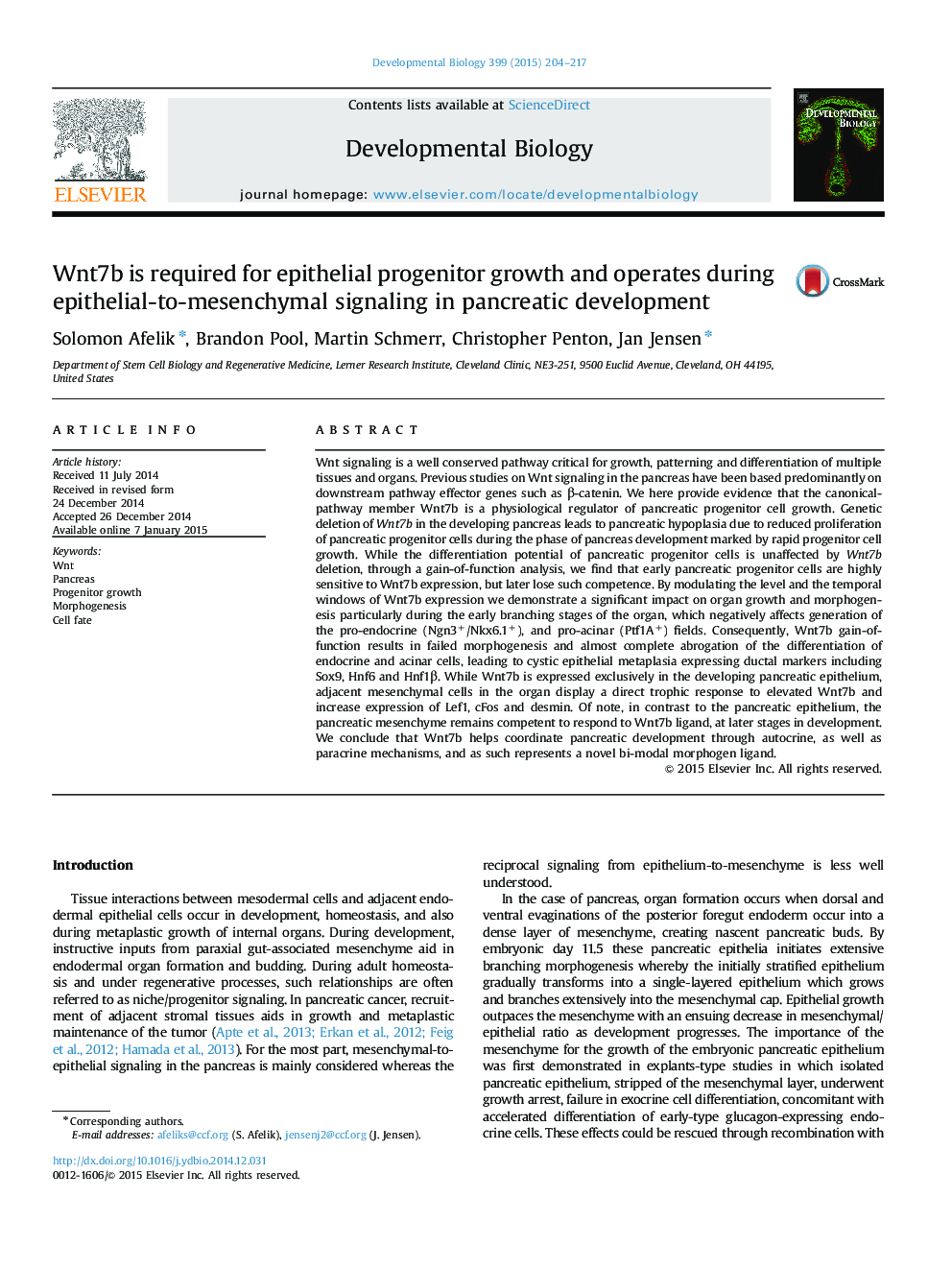| کد مقاله | کد نشریه | سال انتشار | مقاله انگلیسی | نسخه تمام متن |
|---|---|---|---|---|
| 2172945 | 1093655 | 2015 | 14 صفحه PDF | دانلود رایگان |

• We identify Wnt7b as a canonical Wnt ligand expressed in the pancreatic epithelium.
• We show that loss of Wnt7b leads to a significant reduction in pancreatic mass.
• Overexpression of Wnt7b in the early pancreas abrogates differentiation.
• Overexpression of Wnt7b in the early pancreas causes cystic epithelial metaplasia.
• We show that Wnt7b mediates epithelial-to-mesenchymal canonical Wnt signaling.
Wnt signaling is a well conserved pathway critical for growth, patterning and differentiation of multiple tissues and organs. Previous studies on Wnt signaling in the pancreas have been based predominantly on downstream pathway effector genes such as β-catenin. We here provide evidence that the canonical-pathway member Wnt7b is a physiological regulator of pancreatic progenitor cell growth. Genetic deletion of Wnt7b in the developing pancreas leads to pancreatic hypoplasia due to reduced proliferation of pancreatic progenitor cells during the phase of pancreas development marked by rapid progenitor cell growth. While the differentiation potential of pancreatic progenitor cells is unaffected by Wnt7b deletion, through a gain-of-function analysis, we find that early pancreatic progenitor cells are highly sensitive to Wnt7b expression, but later lose such competence. By modulating the level and the temporal windows of Wnt7b expression we demonstrate a significant impact on organ growth and morphogenesis particularly during the early branching stages of the organ, which negatively affects generation of the pro-endocrine (Ngn3+/Nkx6.1+), and pro-acinar (Ptf1A+) fields. Consequently, Wnt7b gain-of-function results in failed morphogenesis and almost complete abrogation of the differentiation of endocrine and acinar cells, leading to cystic epithelial metaplasia expressing ductal markers including Sox9, Hnf6 and Hnf1β. While Wnt7b is expressed exclusively in the developing pancreatic epithelium, adjacent mesenchymal cells in the organ display a direct trophic response to elevated Wnt7b and increase expression of Lef1, cFos and desmin. Of note, in contrast to the pancreatic epithelium, the pancreatic mesenchyme remains competent to respond to Wnt7b ligand, at later stages in development. We conclude that Wnt7b helps coordinate pancreatic development through autocrine, as well as paracrine mechanisms, and as such represents a novel bi-modal morphogen ligand.
Journal: Developmental Biology - Volume 399, Issue 2, 15 March 2015, Pages 204–217